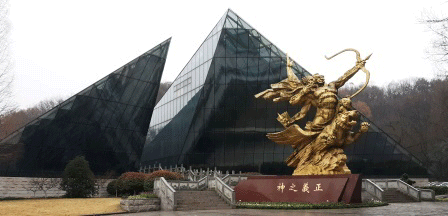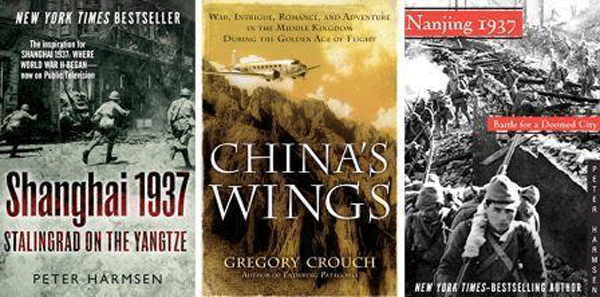Nanjing’s Aviation Martyrs’ Museum & Cemetery
Professor Gaye Christoffersen teaches an HNC course on ‘American Foreign Policy in Asia,’ and every year her class makes a field trip to Nanjing’s Aviation Martyrs’ Museum and Cemetery – and this year she invited me to come along. The memorial holds the remains of more than 3,300 aviators and ground crew — with an average age of only 23 — who were killed during the conflict with Japan in the 1930s and 1940s, including some 2,197 Americans, 236 Russians and two Koreans.
 Nanjing’s Aviation Martyrs’ Museum
Nanjing’s Aviation Martyrs’ Museum
Given this region’s wartime history and traumas, there are certainly many books, films, & other relevant media available – but I’ve read a number of books in recent months that are both illuminating and very well-written about the conflict. Shanghai 1937: Stalingrad on the Yangtze and Nanjing 1937: Battle for a Doomed City were both authored by Peter Harmsen, an East Asian foreign correspondent who also has a blog concerning China and WWII. Previous postings have noted the damage aerial bombings caused in that particularly brutal year of 1937 (e.g., Shanghai’s Bloody Saturday) – and the story of the Flying Tigers is also well documented (and, yes, I checked out the 1942 John Wayne movie about their exploits after this visit). But until reading Harmsen’s book I was not aware of the role that the Soviet Union’s pilots had played in the attempted defense of Nanjing, with many now buried at the memorial.
The very first American pilot killed in China was Robert Short, of Tacoma, Washington – and that occurred in February, 1932, almost a full decade before Pearl Harbor. American aircraft companies like Curtiss-Wright and Boeing wanted to sell planes within China, and Short landed a job ferrying planes from one location to another. He was killed over Suzhou, when he attacked Japanese aircraft bombing the city. Commercial aircraft activities – including airlines such as Pan Am, the domestic China National Aviation Corporation (CNAC), and the famous “Hump” supply flights over the Himalayas — are another part of a complicated aviation history, well-told by Gregory Crouch in China’s Wings. The Hump flights were the world’s first strategic airlift…. a skill later replicated in Berlin by the same American commander.
